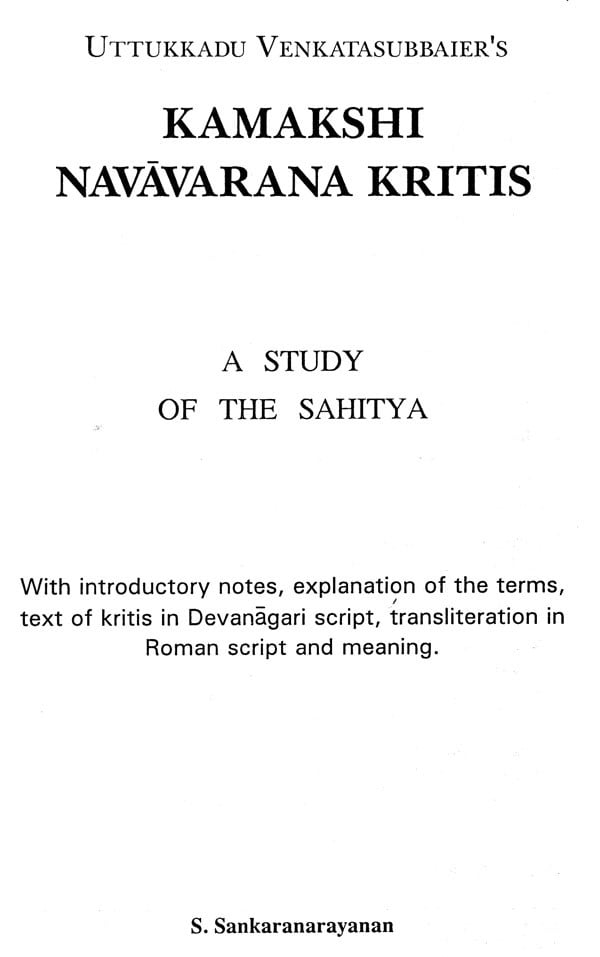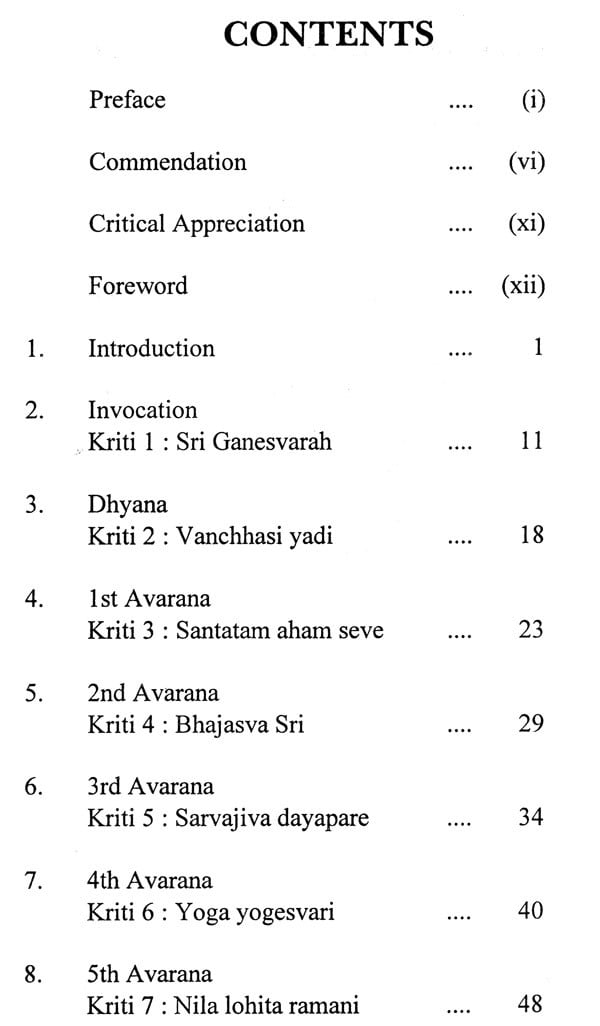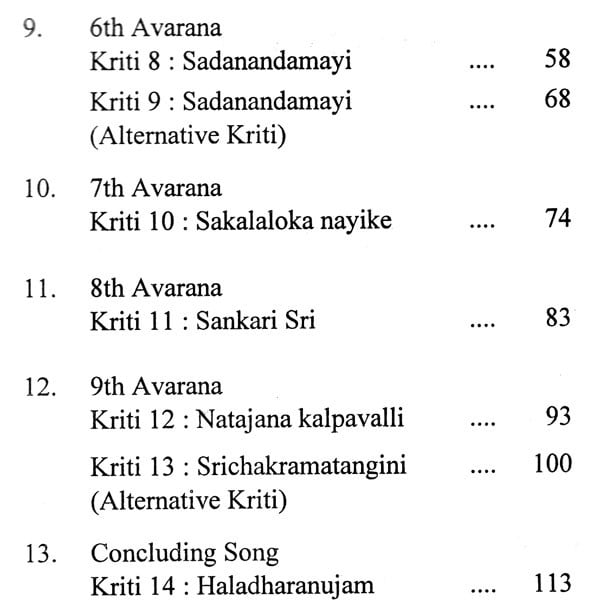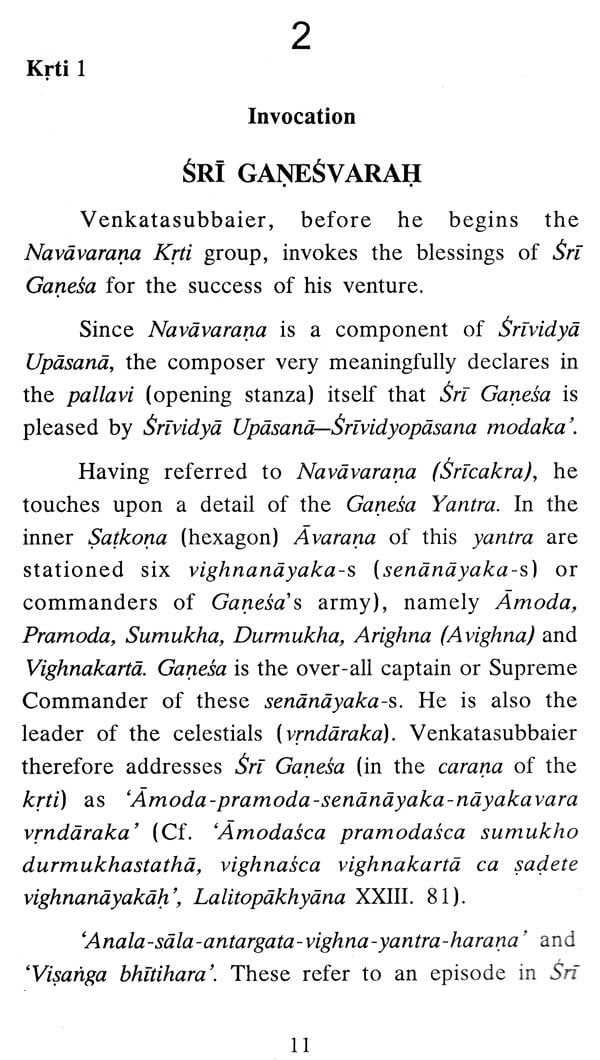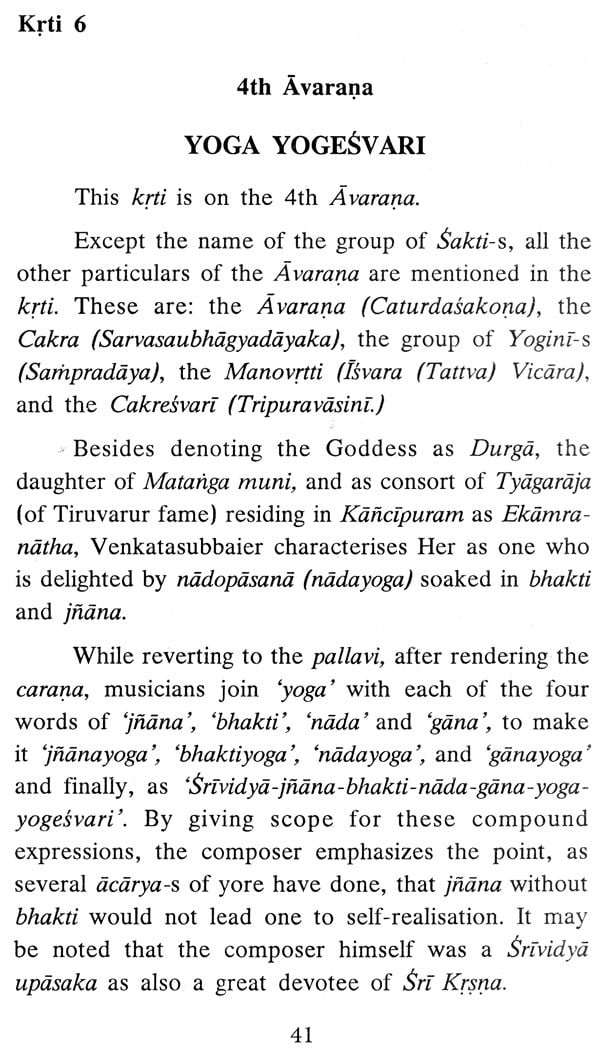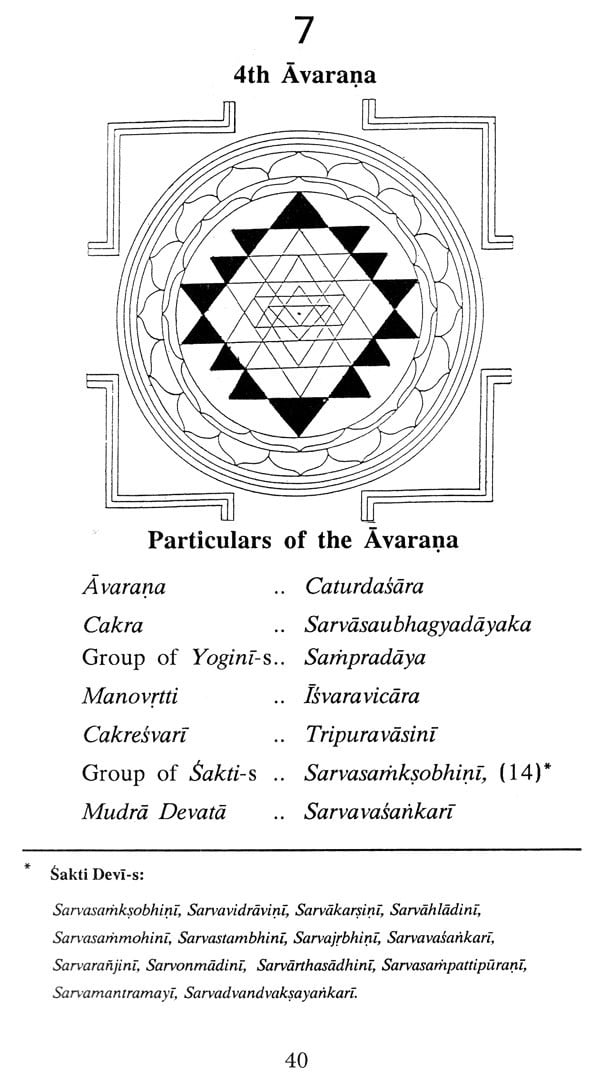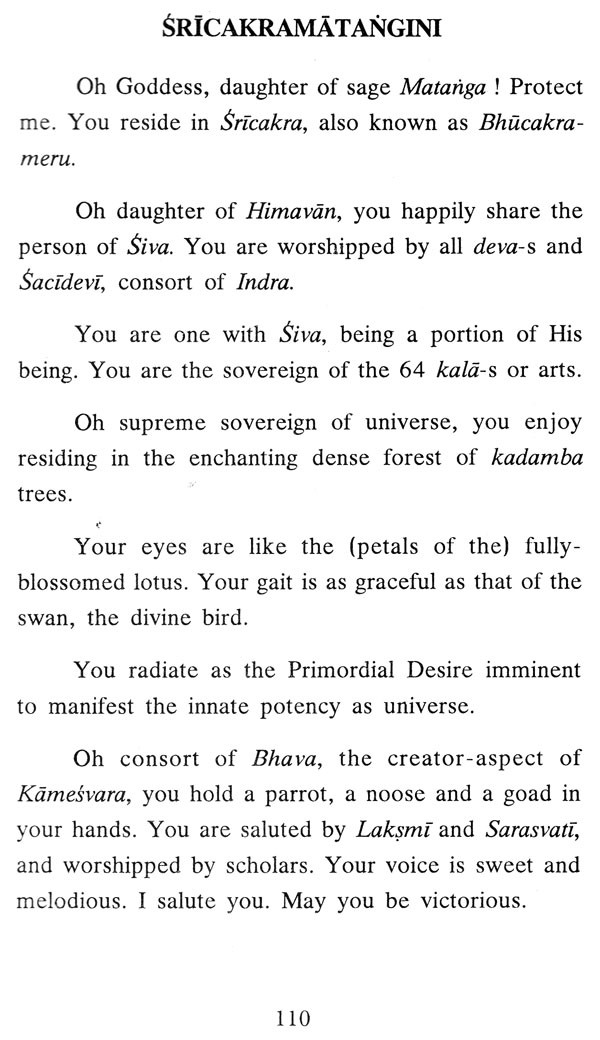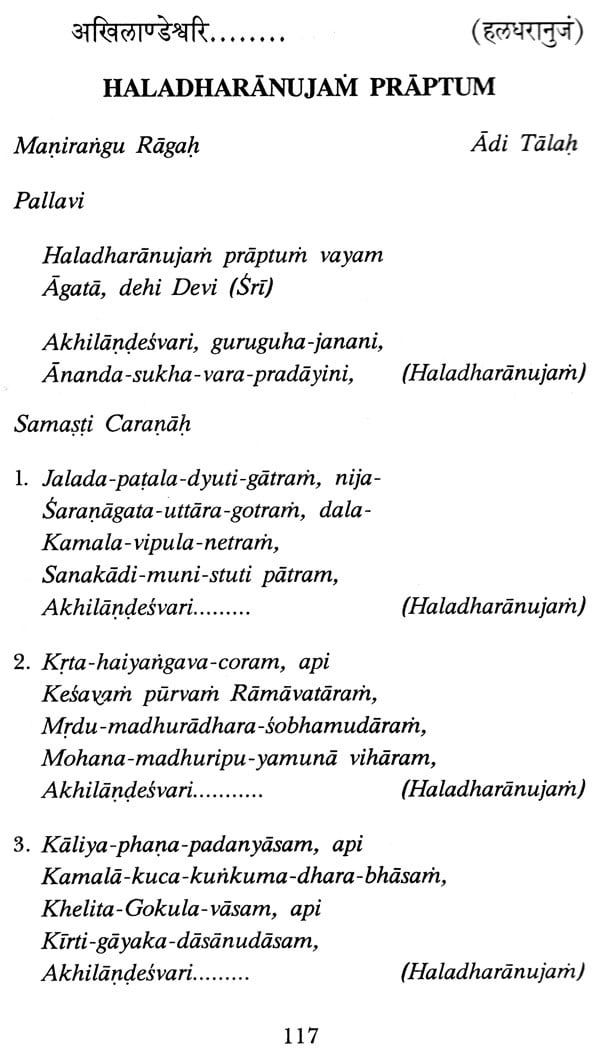
Uttukkadu Venkatasubbaier's Kamakshi Navavarana Kritis- A Study of the Sahitya
Book Specification
| Item Code: | UAX527 |
| Author: | S. Sankaranarayanan |
| Publisher: | Tirumala Tirupati Devasthanams, Tirupati |
| Language: | Sanskrit Text With Transliteration and English Translation |
| Edition: | 2000 |
| Pages: | 130 |
| Cover: | PAPERBACK |
| Other Details | 8.50 X 5.50 inch |
| Weight | 200 gm |
Book Description
'Navavarana' (Nava aavarana, literally nine veils or enclosures) is a word known to all Sakti upasakas and lovers of Carnatic music; the latter associate it with the celebrated Kamalamba Navavarana Kritis of Muttusvami Dikshitar.
Decades before the Dikshitar's Kamalamba Navavarana, Uttukkadu Venkatasubbaier had composed fourteen kritis in Sanskrit, known as Kamakshi Navavarana Kritis, as the songs are on Sri Kamakshi of Kanchipuram. This book deals with the sahitya of these kritis.
Authentic information about the life of Venkatasubbaier is scanty. What little we have is based on legends. He is believed to have lived in the latter part of the 17th century. He was a vaggeyakara (composer), poet, mystic and Srividya upasaka. He has composed hundreds of songs, mostly in Tamil, on various deities. However only a few of them have gained prominence. His compositions on Sri Krishna are known as 'Raasa gaanam'.
The Kamakshi Navavarana Kritis appeared in the form of a book in Tamil in 1989. Compiled by the late Brahmasri Needamangalam Krishnamurthy Bhagavathar and published by Smt Rajammal Krishnamurthy (at No. 5, Ellamman Kovil Street, West Mambalam, Chennai-33), under the title "Uttukkadu Venkatasubbaier Aruliya.
A 'vaggeyakara' is one who creates a muscial piece-both the musical structure and the appropriate sahitya. The word 'composer' is not an exact equivalent of 'vaggeyakara'. It is however used in the absence of an alternative word.
The discovery of the musical compositions of Tallappakkam Annamacharya, Uttukkadu Venkatasubbayyar and Maharaja Swati Tirunal during the 20th century made a major Impact on South Indian music as thousands of musical forms of an amazing variety and range saw the light of the day for the first time. In fact, Carnatic music started flowing along new channels and there was a welcome expansion of its scope.
Among the three giants, Venkatasubbayyar stands in a class by himself. It is a pity that the biographical details of this master composer are scanty. He may have lived in the middle of the eighteenth century, since his elder brother Kattu Krishnayyar was a musician in the court of the Tanjore ruler Pratapa Simha who ruled form 1739 to 1763. One book shows his period as 1700 1765.
Venkatasubbayyar devoted his whole life to singing about the dancing Krishna, Nartana Gopala, at Uttukkadu. He lived a lonely ascetic life, did not marry, and had no students. But for the late Nidamangalam Krishnamurti Bhagavatar, his compositions would have remained a sealed book.
The poet composed various types of kirtanas In Sanskrit and Tamil but he did not restrict himself to this musical form. His oeuvre also comprises other types of compositions such as Tillana and Ragamalika. And he was the first to compose a set of 14 Navavarana Kirtanas on Goddess Kamakshi. This fact was not known till Krishnamurti Bhagavatar published the kirtanas with notation in 1989. He did not, however, furnish their meaning.
Navaratri is celebrated as a festival for nine days from the 1st of the light half of Asvina (September October).
In the South it is celebrated to mark the triumph of Goddess Lalita over Mahişăsura and other demons. In that region, music concerts are held in the evenings on the nine days as a form of worship of the Mother, in addition to the usual puja, etc. Traditionally, kṛti-s (musical compositions) on the Mother in Her many manifestations are rendered on those days, particularly the Kamalamba Navāvarana Krti-s composed for this purpose by Muttusvami Dikṣita (1775-1835). There is another set of Navavarana Krti-s, which is not widely known. This is the group of Kämäkṣi Navävarana Krti-s composed by Uttukkadu Venkatasubbaier, long before Dikṣita composed Kamalamba Navävarana Krti-s. Both the sets of Navävarana Kri-s are on the Mother Goddess as embodied in Śricakra.
Unlike Navävarana Puja, rendering of Navavarana Krti-s does not call for any initiation; anyone who has learned the kṛti-s can render them. And if that person has an understanding of the meaning of the kṛti-s, particularly the significance of the terms and expressions used therein, he/she will have an elevating experience.
**Contents and Sample Pages**
